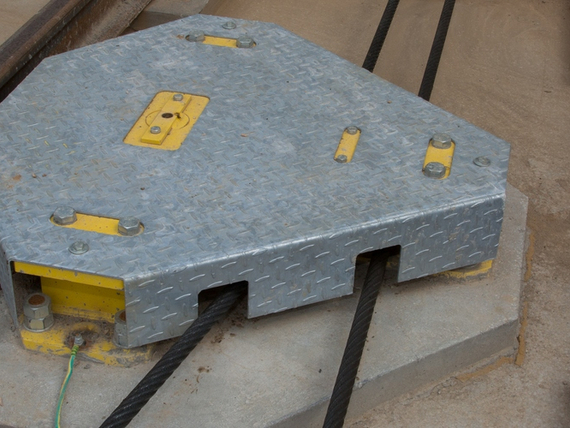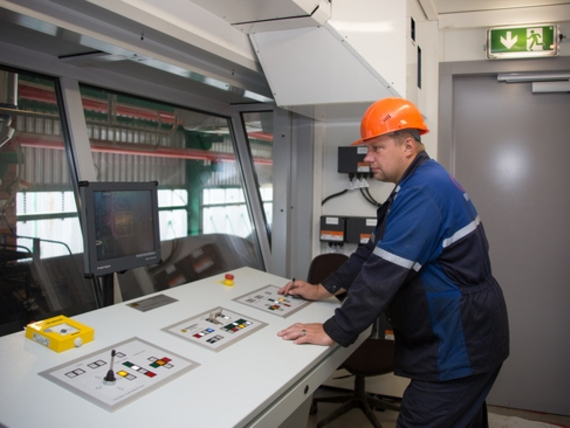Founded in 1961, the Slavneft-Yanos refinery is the fifth largest petroleum processor in Russia with an annual processing volume of more than 15 million tons. The collaboration with Slavneft-Yanos materialized in 2004 through the Dipl.-Ing. Scherzer GmbH of Essen in Germany. The company plans and produces turnkey plant systems worldwide for the handling and storage of liquid and gaseous substances. Together with Vollert, a shunting and loading concept was developed, whereby the two standard gauge pusher trucks pull tank wagons with a tensile load of up to 3,200 tons and which are also able to drive side-on out of the track after shunting. The tracks remain open for thru traffic. The pusher truck is pushed fully automatically onto the track and coupled to the last wagon. With the help of sensor control and monitored by camera, it pulls the wagons over a shunting length of 450 meters under the filling tubes accurate to the millimeter. Light sensors detect the precise position and communicate with the control of the push car. Transport continues via the revolving traction rope. The rope is automatically tensioned by the motor, if necessary, to ensure a smooth run. Each of the two vehicles has its own drive station and a rope tensioning station.
Redesigned for harsh environments
Traction forces of 170 kN are produced, when the wagons are pulled, which was posing quite a challenge for Vollert engineers during the first orders for the Russian refineries especially in regards to the harsh environmental conditions. "We were able to install a new generation of standard gauge pusher trucks at the refinery in Yaroslavl, where we incorporated the experiences made by other Russian refineries," recalls Urban Kübel. The goal was, in particular in view of the transmission of traction from the traction sheave on the pre-stressed traction cable, to achieve a permanent longitudinal and transverse slip of the 3½ rope windings on the traction sheave. "We had thus to completely redesign the traction sheave profiles for the respective application and continued working on fine-tuning the later plants at the Russian refineries," summarized the specialist in shunting systems the development process. The radius of the traction sheave profiles was thus ultimately adjusted to precisely fit the rope diameter, while the geometry was redeveloped to meet the extremely high demands, and the prestress was also optimized by springs. This ensured a uniform pull and eventually wear out was so massively reduced that the ropes at the factory in Yaroslavl lasted amazingly for 13 years.
Longevity saves customers millions
Precisely because of the high requirements, Vollert decided to use ropes with plastic cores. Even if they are about twice as expensive as ropes without this core, they last for more than twice as long. This eliminates one or two replacements. Based on a processing volume of 3,000 tons of oil per day this corresponds to a value of currently about 1 to 2 million Euros (October 2017) and up to 4 million Euros depending on the day value of the oil price (June 2014). The engines and transmissions of the standard gauge push cars are heated and equipped with a snowplow for the many snowfalls during the long winter months. We use low temperature steels as material, which can tolerate these extreme conditions without becoming brittle and break. "Together with the Yaroslavl plants, we have also delivered two sister plants to Novatek near Novy Urengoy on the Arctic Circle. Temperatures there are below -60°C," explains Urban Kübel. Loading takes place in hazardous ex-zones. All the mechanical and electrical components used in the Vollert plants are thus designed for consignments in refineries in compliance with ATEX directives requirements.



